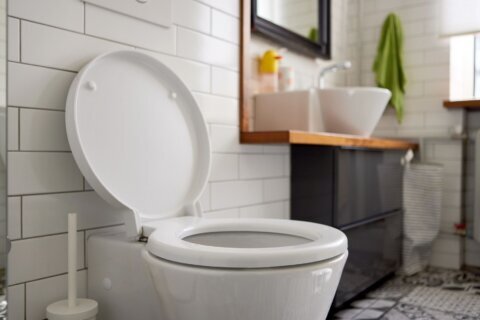When Mary Hall began experiencing immense pain in her upper back, which spanned down her neck and crossed her shoulder, she sought relief from doctors. She found that her pain was caused by arthritis which was completely eroding the cartilage on a portion of her spine.
“It just kept getting worse,” said Hall, a 77-year-old resident of Callaway, Maryland.
When procedures to block nerves in her back failed to relieve her pain, doctors decided spinal fusion surgery was necessary.
Earlier this year, surgeons at D.C.’s MedStar Washington Hospital Center became the first to use a new technology and tool: an exact replica of a patient’s upper spine.
For surgeons, the more you know about a patient before the scalpel comes out, the better the chances are of having a completely successful procedure.
“(The replica) allows us to then perform the surgery more accurately and a bit faster and safer,” said orthopedic spine surgeon Oliver Tannous.
In January, Tannous became the first doctor to use MySpine Cervical 3D, a technology created by the company Medacta. The product provides a 3D printout of the spine, made from CT scans of the patient’s spine, that provides surgeons an exact mold of the area they will operate on.
The technology has been used for surgeries on lower sections of the spine, but only recently did the FDA approve the use of the molds for the upper section of the spine.
“What’s different about this part of the spine is that you don’t just have the spinal cord that travels past there, you also have the vertebral artery that sneaks around those two levels, and the vertebral artery is one of the main arteries that feeds the brain,” Tannous told WTOP.
Tannous said if the artery is disrupted, the patient could suffer a stroke.
Having a 3D mold of a spine, according to Tannous, allowed him to not only better understand Hall’s anatomy, but also provide a drill guide, which helped accurately place screws into Hall’s spine.
Tannous said the ability to have a better understanding of the spine before surgery means less surprises for surgeons, and in most cases, a 25% decrease in the duration of back procedures. In the future, Tannous believes the technology could provide more than just a mold.
“Maybe you can, in the future, 3D print certain implants, or certain screws that match that particular patient’s anatomy,” he said.
For Hall, the surgery was a complete success and she didn’t take any pain medications after leaving the hospital. She said didn’t know the role the 3D mold played in her procedure until months after the surgery, but what she does know is the surgery made a big difference in her life.
“I feel wonderful. I feel like a teenager again,” Hall said.
Get breaking news and daily headlines delivered to your email inbox by signing up here.
© 2024 WTOP. All Rights Reserved. This website is not intended for users located within the European Economic Area.








